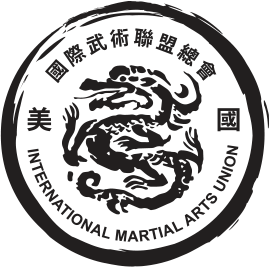Small talk on Xing Yi Quan?
/To practice Chinese martial arts or any other country's martial art, it is essential to read and understand that culture. When we talk about Xing Yi Quan, it is crucial to understand what it means. Xing means the shape or look of an object, while Yi refers to the essence or meaning of that object. Therefore, Xing Yi Quan is a style that focuses on the deeper meaning of movement and not just the way elements or animals move.
For example, in the 12 animals of Xing Yi, one of the animals is the bear. In this practice, you do not copy the bear's movements, but the master studies how the bear moves, how it walks, stands up, and how it moves its body. After studying these details, the master then looks at the human body and how to incorporate these ideas and ways of movement into it. Though humans and animals have similarities, they also have differences, which the master takes into account.
This style is different from modern Chinese martial arts, which is known as Wushu. Nowadays, Wushu only focuses on how to jump higher, make more twists in the air, and make the sword twist faster, with no deeper meaning behind the movements. When practicing Xing Yi Quan, it is important to focus on the movement first with just the body, then with the mind, and finally, to let the mind travel outside of the body.
Let me use the bear as an example again. When we observe a bear standing up, how do they do it? They stand up with their heads, and when they walk, do they move their heads or necks? Not really. So let's talk about foundational movement. First, let's try to imitate that - when you walk, try not to move your neck, and when walking slowly, let your leg and hip move together. Once you can do that, it's time to make your mind work with your body. What does that mean? Let me give you another example to help you understand. When you walk, how much is under your control? How much muscle power is being wasted? You can walk with less muscle engagement, but due to some bad habits, you may be using more energy and force than necessary. When you let your mind work with your body, you need to feel and work with your body every step of the way. You need to know which muscles are moving and whether you can move them without engaging those muscles. You should also be aware of how much pressure you are putting on each step and at what angle you are stepping. Once you can do all these things, you can move on to step three - let the force travel outside your body. Let's go back to the bear example. We say you need to walk with your head, what does that mean? That means you need to feel like something is pulling your head and that you are pushing your force up to your head and above it. This is the force traveling outside your body. When you feel like a force is pulling you, that's a good place to start.
If you think that the practice described sounds a lot like Tai Chi, you are 50% correct. While the two practices are similar, there are also many differences. This is why people study different styles based on their master's suggestion, as it can help improve their skills. Even if you don't particularly like Xing Yi, it is still worth studying as it can improve your abilities in other styles that you do enjoy
What is the Xing Yi you are practice in the Monk Wise?
The Xing Yi taught at Monk Wise originates from Shanxi, China. According to legend, the founder of Xing Yi was General Yue Fei during the Song Dynasty. One day, Xing Yi master Ji Ji Ke (姬際可) traveled to Zhongnan Mountain and discovered General Yue Fei's martial arts book. Some stories claim that he learned the style from a Taoist monk. The style is said to come from the Yue style Six Harmony Spear, which is why it is also said that when one puts down the spear, they are practicing Xing Yi.
Interestingly, when Master Ji Jike taught the style to his students, it was called Xinyi (心意). According to legend, Ji Jike taught Xinyi to some Shaolin monks, which is why one of the highest systems in Shaolin is called Xin Yi Ba (心意把). Later, Xinyi was passed down to Master Li Luo Neng (李洛能) who organized the style and renamed it Xing Yi (形意). However, there is still a big argument about this. Shaolin claims that they created Xinyi and that Ji Jike was just a student at Shaolin. They also argue that Xing Yi is different from Xinyi. It is up to the individual to decide what is real and what is not.
The line:
Master Ji Jike (姬際可) – During the Ming dynasty, Master Ji Jike was known as the undefeated "Spear of God" and "God of the Fist".
Li Luo Neng (李洛能)- also known as "The Fist of God", was the teacher of the founders of Che-style (車) and Song-style (宋) Xing Yi.
Liu Qilan (劉奇蘭) – Master Liu, was a renowned practitioner of the dragon style in the 12 animal forms. He is credited with making the dragon style very popular, and there is a saying that goes "dragon style search deep in the bones" (龍形搜骨). Master Liu was also known for his friendly and helpful nature, and he would often assist practitioners of other styles who visited him to practice Xing Yi. One famous visitor was master Sun Lutang (孫祿堂), who was known as the number one hand of the world 天下第一手, as no one could defeat him at that time. Sun Lutang was also the founder of Sun style tai chi, Xin Yi, and Bagua, and was known as the tiger head general虎頭少保.
Li Cunyi (李存義)- nick name single broad sword Li. The founder of Chinese martial art/samurai association(中華武士會) This association work closely with Chin Woo Physical Association. Samurai is a Japanese word, in Chinese is Wushi (武士)
Chen Panling (陳泮嶺)-Vice president of the central Chinese martial art center(中央國術館).
Weifo Jung and Adam Woolsey
There is much more to each master's story than just two sentences. If you want to learn more, purchase the upcoming magazine issue in May.
-Wei Fo Jung













